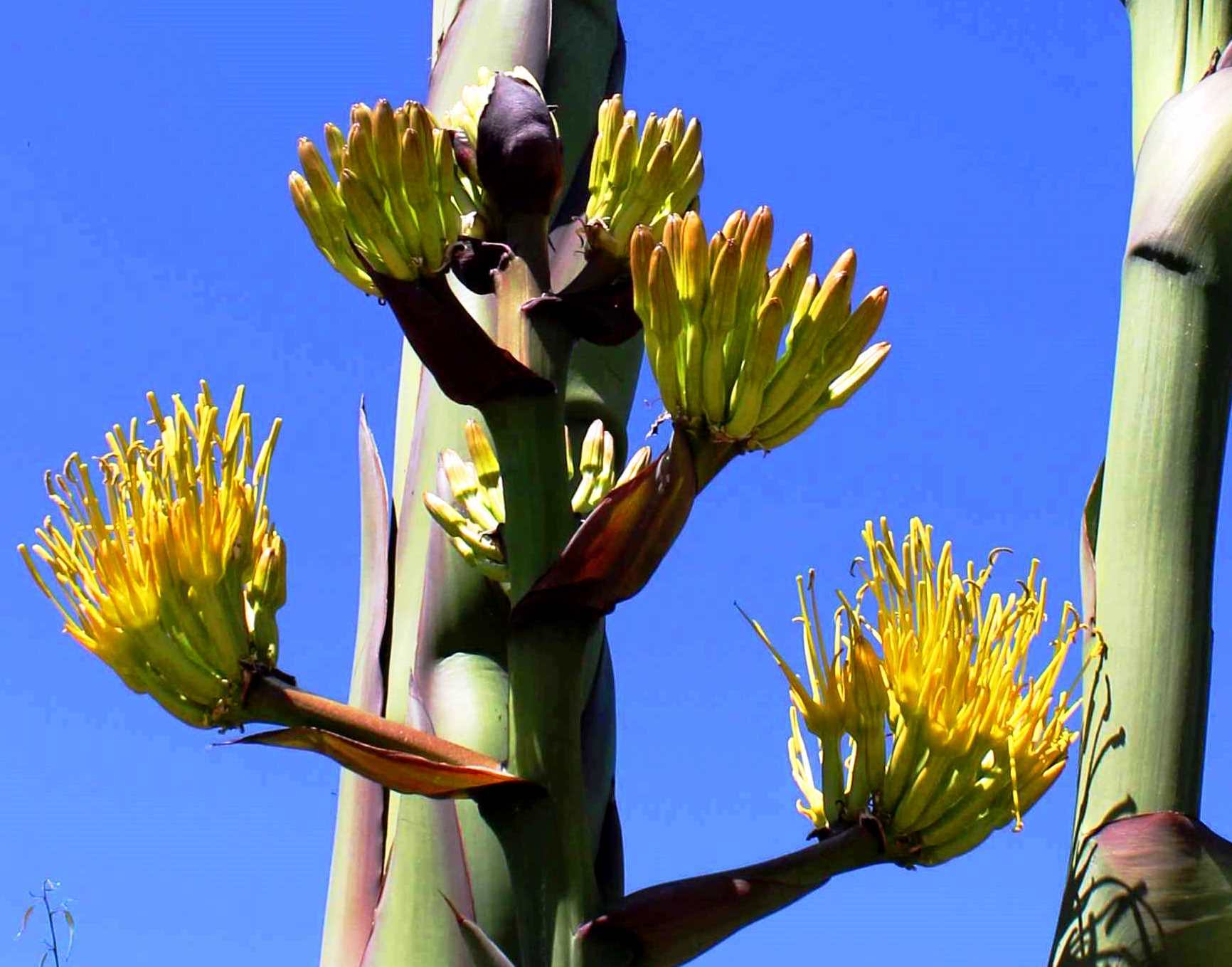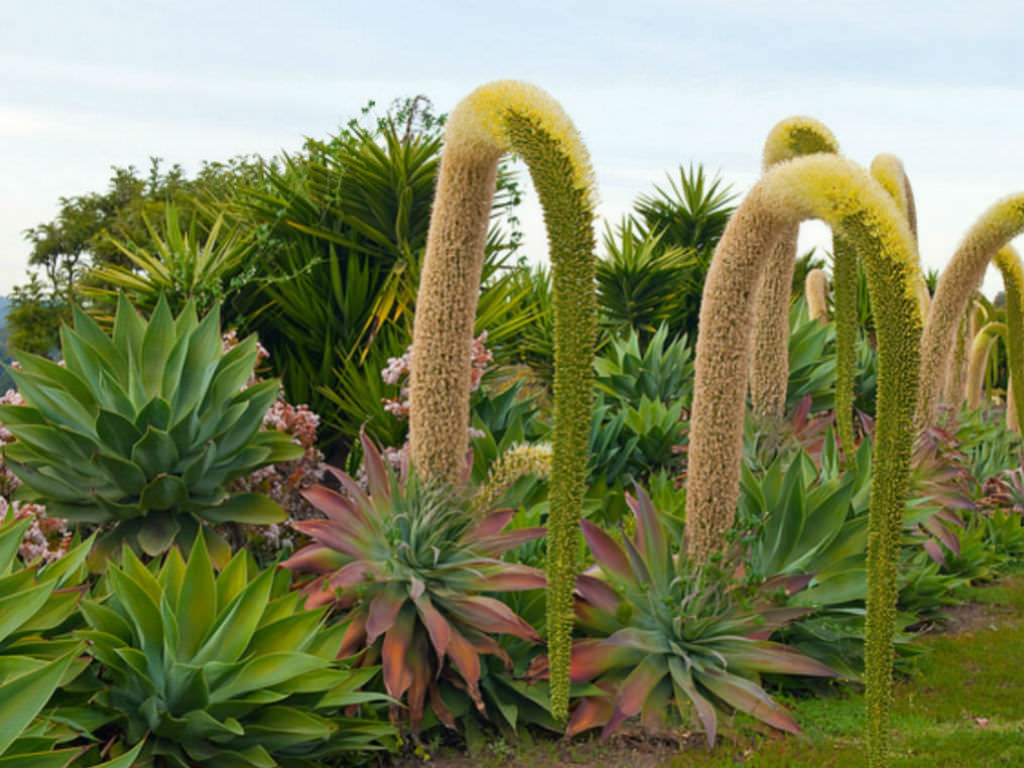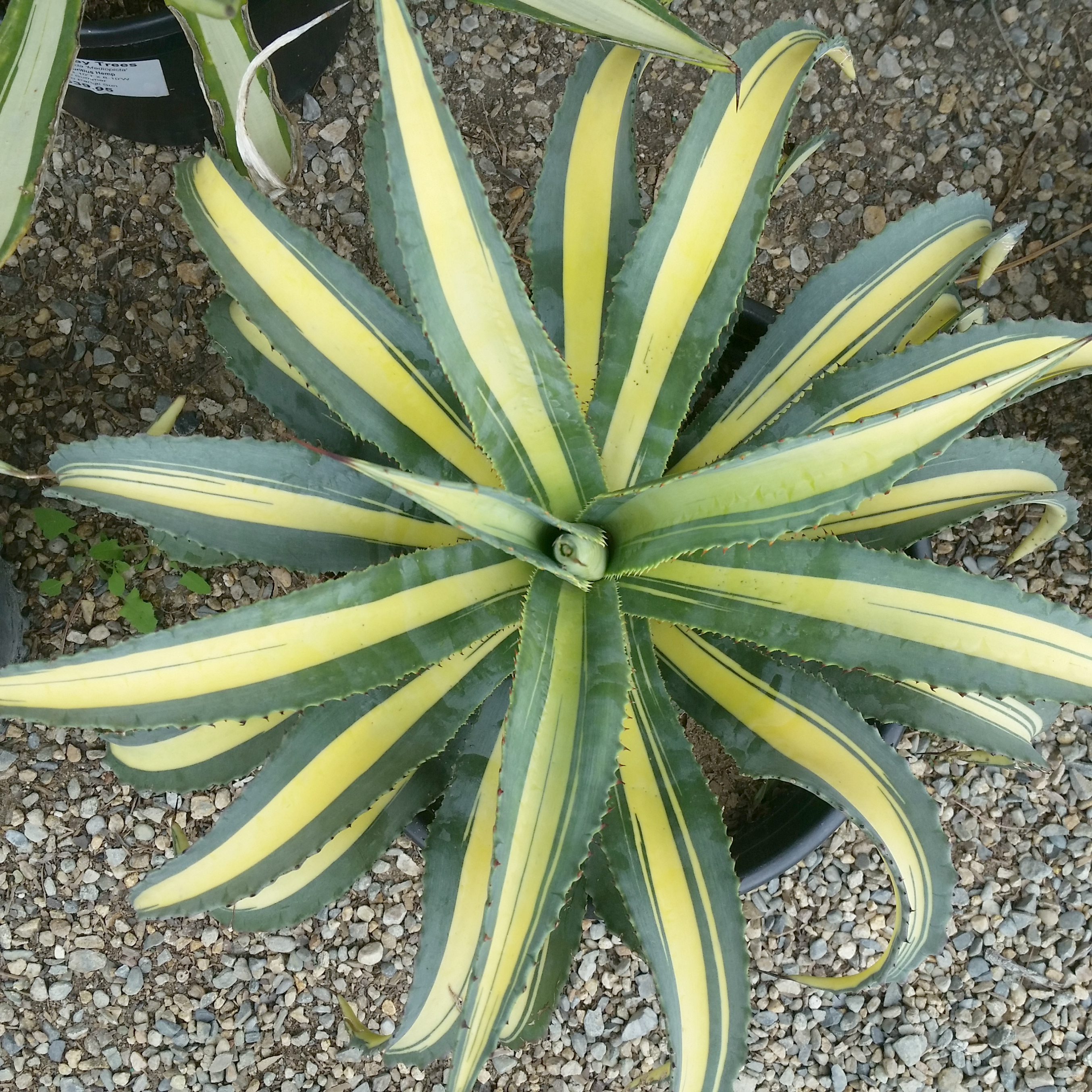
Agave In Bloom The Living Coast Discovery Center
Like any other plant, the agave plant also suffers from pests and other plant problems. Take a look at some: Overwatering. The most common problem with agave plants is root rot which can be caused by overwatering. Always make sure its roots are kept dry, and its soil is not soggy. Overwatering also makes agave plant leaves turn yellow and wilt.

Hortus Camdenensis Agave americana L.
Propagate agave plants by removing the offsets (pups) that grow around the base of the plant. If propagating from a potted agave, wait until the pup is about a third of the size of the parent plant. Use a clean, sharp knife. Allow the cut to dry and callus over before planting the pup in an equal-parts mix of compost and grit or perlite.

Agave multifilifera Chahuiqui Century Plant (4.5" Pot) Little Prince To Go
Succulents How Often Does Agave Bloom and How Long It Last? It's always a great sight to behold whenever plants are starting to bloom because they add a lot of color to the scenery. Most plants tend to flower quite often, as some of them usually do so every year when spring comes.

Agave multifilifera Chahuiqui Century Plant (4.5" Pot) Little Prince To Go
Agave flower stalks tend to be impressively tall relative to the plants. There are two forms: unbranched with blooms along the stalk, and branching with clusters of flowers. The unbranched bloom spike of Agave vilmoriniana Flowers' sweet nectar attracts hummingbirds, bees, and other pollinators.

√ Agave Tempe
Agave plants with their iconic leaves and striking appearance, bring a dramatic presence and add a bold, geometrical nuance to landscape architecture. Agaves are well suited for the extremely arid conditions of the desert, with tough, spiny exteriors that protect their highly sought-after moisture from natural predators.

Agave attenuata (Fox Tail Agave) World of Flowering Plants
Agave americana, the century plant, is a medium to large, solitary, or freely suckering and sometimes seeding agave with a basal rosette up to 3m wide. Agave americana is the best-known species. The leaves are often reflexed above the middle, and this is a characteristic feature of the species.

Flowering Agave Photograph by Douglas Taylor Fine Art America
1. Repot your agave plant every year. An annual repotting is necessary to replenish the plant's soil. 2. Use a sandy potting soil mix. When repotting an agave plant, use potting soil mixed with sand or pumice to improve drainage and avoid overwatering. 3. Place the crown of your plant above the soil line.

Agave americana var. mediopicta Variegated Century Plant Mid Valley Trees
A. geminiflora, or twin-flowered agave, is an interesting plant from Mexico's west coast. It forms a dense rosette of 2- to 3-foot spaghetti-narrow green leaves with curly white filaments fringing off the edges. It performs beautifully in containers.
/arc-anglerfish-arc2-prod-dmn.s3.amazonaws.com/public/AQKXBUH3NJFOGXBOAFR4UTB7NY.jpg)
Dallas Arboretum's 20yearold Victoria Agave plant begins onceinalifetime bloom
AGAVE AMERICANA 'VARIEGATA'. Since the 19th century, a popular garden plant in Southern California, with creamy golden stripes down the length of the foliage. Its thick guttered six- to eight-foot-long leaves make it a whopper of a specimen up to 12 feet across. Size can be greatly reduced if it's kept in a container.

Check out this Blue Glow Agave I purchased at the Desert Botanical Garden's plant sale in
Traditional alcoholic drinks like tequila and mescal from agave tequilana, agave angustifolia, and agave salmiana. The sweet juice from the flower stalk is also used to make Pulque, which is an alcoholic beverage as well. 10. A Multipurpose Plant. The leaves of Agave Americana and Agave Sislana are used in making paper and weaving mats. You can.

Agave In Bloom The Living Coast Discovery Center
Description [ edit] The large flower spike of Agave chiapensis, San Francisco Botanical Garden The succulent leaves of most Agave species have sharp marginal teeth, an extremely sharp terminal spine, and are very fibrous inside. [6] The stout stem is usually extremely short, which may make the plant appear as though it is stemless.

Blooming Agave Agaves, Garden Photos, The Outsiders, Bloom, Plants, Quick, Plant,
April 16, 2023 by Kelly Spicer Agave spp. Succulents exist in a vast array, their form and color ranging from tiny green bulbous leaves on a string-like stem to rosy-toned stumps that appear to be living rocks. It can be hard to believe that agaves belong to this category as well.

Free Images cactus, flower, botany, flora, heat, aloe, spines, flowering plant, exotica, land
agave, (genus Agave ), genus of the some 200 species of the family Asparagaceae (formerly Agavaceae ), native to arid and semiarid regions of the Americas, particularly Mexico, and the Caribbean.

Agaves Plant Care and Collection of Varieties
Native to Mexico, the West Indies, and the U.S. Southwest, agaves make rosettes of green, gray, blue, or variegated—often toothed and spiny—succulent leaves, some sword-shaped, some shorter and.

Agave a. var mediopicta 'Alba' (White Variegated Century Plant)
1. Foxtail Agave Botanical Name: Agave attenuata With silver and pale green foliage, foxtail looks graceful. It also forms a rosette resembling a flower that looks like a fox's tail, which is the reason behind its unusual name. Also, unlike other agaves, it has no teeth or terminal spines. 2. Caribbean Agave Botanical Name: Agave angustifolia

Agave Americana 'Century Plant' 6'' Pot Hello Hello Plants & Garden Supplies
By Bonnie L. Grant last updated March 23, 2023 Agave is a long-leaved succulent plant that naturally forms a rosette shape and produces a flower spire of attractive cup shaped blooms. The plant is drought tolerant and perennial, making it ideal for the mature arid garden.